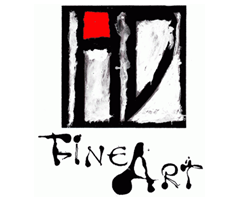Product Description
Jeffrey Hartman “Motobecane” Oil on canvas 1978


JEFFREY HARTMAN USA
“Motobecane” 1978
Oil on canvas
Signed: “Jeffrey Hartman ‘78”, “© 78 HARTMAN” (on the back)
Framed H: 26 1/2” x W: 18 1/2”
Price: $18,000
Belgian art dealer Isy Brachot coined the French word Hyperréalisme, meaning Hyperrealism, as the title of a major exhibition and catalogue at his gallery in Brussels in 1973. The exhibition was dominated by such American Photorealists as Ralph Goings, Chuck Close, Don Eddy, Robert Bechtle and Richard McLean; but it included such influential European artists as Gnoli, Richter, Klapheck and Delcol. Since then, Hyperealisme has been used by European artists and dealers to apply to painters influenced by the Photorealists. However, Hyperrealism is contrasted with the literal approach found in traditional photorealist paintings of the late 20th century. Hyperrealist painters and sculptors use photographic images as a reference source from which to create a more definitive and detailed rendering, one that often, unlike Photorealism, is narrative and emotive in its depictions. Strict Photorealist painters tended to imitate photographic images, omitting or abstracting certain finite detail to maintain a consistent over-all pictorial design. They often omitted human emotion, political value, and narrative elements. Since it evolved from Pop Art, the photorealistic style of painting was uniquely tight, precise, and sharply mechanical with an emphasis on mundane, everyday imagery. Hyperrealism, although photographic in essence, often entails a softer, much more complex focus on the subject depicted, presenting it as a living, tangible object. These objects and scenes in Hyperrealism paintings and sculptures are meticulously detailed to create the illusion of a reality not seen in the original photo. That is not to say they’re surreal, as the illusion is a convincing depiction of (simulated) reality. Textures, surfaces, lighting effects, and shadows appear clearer and more distinct than the reference photo or even the actual subject itself.
Jeffrey Hartman “Motobecane” Oil on canvas 1978
You must be logged in to post a comment.
THOMAS F. BARROW (b. 1938) Kansas City, MO
Register Synthesis Photogram 1978
Gelatin silver print photogram with applied spray paint
Signed: Register Synthesis – 1978 – Thomas F. Barrow (in ink on back)
Exhibited: J.J. Brookings & Co. (San Jose, CA): Thomas F. Barrow: Inventories and Transformations, A Twenty Year Retrospective, Nov. 6 – Dec. 16, 1986. This exhibit occurred simultaneously with the following two museum shows: the San Francisco Museum of Modern Art (Nov. 6, 1986 – Jan 11, 1987) and the Los Angeles County Museum of Art (Feb. 26 – May 10, 1987).
Related photograph illustrated: Aperture: The New Vision: Forty Years of Photography, no. 87 (New York: Aperture Foundation, Inc., 1987), cover image.
Framed size: H: 19 5/8” x W: 23 7/16”
Thomas Barrow, American was born in Kansas City, Missouri. He studied at the Art Institute of Design in Chicago, Illinois and received his M.A. in 1967. At the George Eastman House, Barrow was the Assistant Director from 1971 to 1972 and served as the Associate Director of the University of New Mexico Art Museum from 1973 to 1976. Barrow started teaching photography in 1976 in the Art Department of the University of New Mexico and by 1985 he became the Acting Director of the University Art Museum. His Midwestern academic pedigree includes studying with Aaron Siskind at the Art Institute of Design in Chicago and with filmmaker Jack Ellis at Northwestern University in Evanston, IL. Barrow has received two NEA Photographers Fellowships in 1973 and 1978.
Barrow has produced a series of silver-gelatin photograms and then applied spray paint to the prints. These combine the feeling of a split-toned black and white print and at the same time appear as color-print photograms. He has produced a series of photograms entitled Disjunctive Forms. His images appear as surreal assemblages of various found and created objects superimposed with stencil text. Barrow works in the “academic” tradition—his pictures are deliberately and consistently experimental, highly intellectualized, scholarly in their concerns, and chock-full of references to the work of other artists.
JEAN MARION GATES HALL (1911-2001) USA
Napa Valley 1940
Oil on canvas, original wood frame
Signed: with her monogram initials JGH (lower right)
Marked on back: Jean Gates Hall, June 18, 1940, Napa Valley
Canvas: H: 14″ x W: 17 1/4″
Framed: H: 17 1/2″ x W: 20 1/2″
Price: $4,250
Born in Memphis, TN on May 19, 1911. Jean Gates studied at the Cummings School of Art in Des Moines. At age 14 she moved to Los Angeles with her family. There she continued at the Chouinard Art School while working for Warner Bros, Walt Disney, and Mintz Studios. Upon moving to San Francisco, she married writer James D. Hall in 1938. Her illustrations were used in her husband’s children’s books. She established a studio in the “Monkey Block” (now the Transamerica Pyramid) and was active in the local art scene. She later earned her B.A. degree at San Jose State University (1955) and M.A. degree at UC Davis (1966). Working in oil and watercolor, her painting style and subject matter evolved with the years from descriptive realism to linear pictures, and finally an entirely new medium called Magpage. Mrs. Hall was a resident of Oakland in the 1980s and died in Cedar Ridge, CA on June 23, 2001.
Exhibitions: Iowa State Fair, 1926; California State Fair, 1937; GGIE, 1939; Paul Elder Gallery (SF), 1939 (solo); NMAA, 1941; SFMA, 1942 (solo); De Young Museum, 1944 (solo); California WC Society, 1945-53; UC Davis, 1946, 1965 (solos); Kingsley Art Club (Sacramento), 1965.

Reviews
There are no reviews yet, would you like to submit yours?